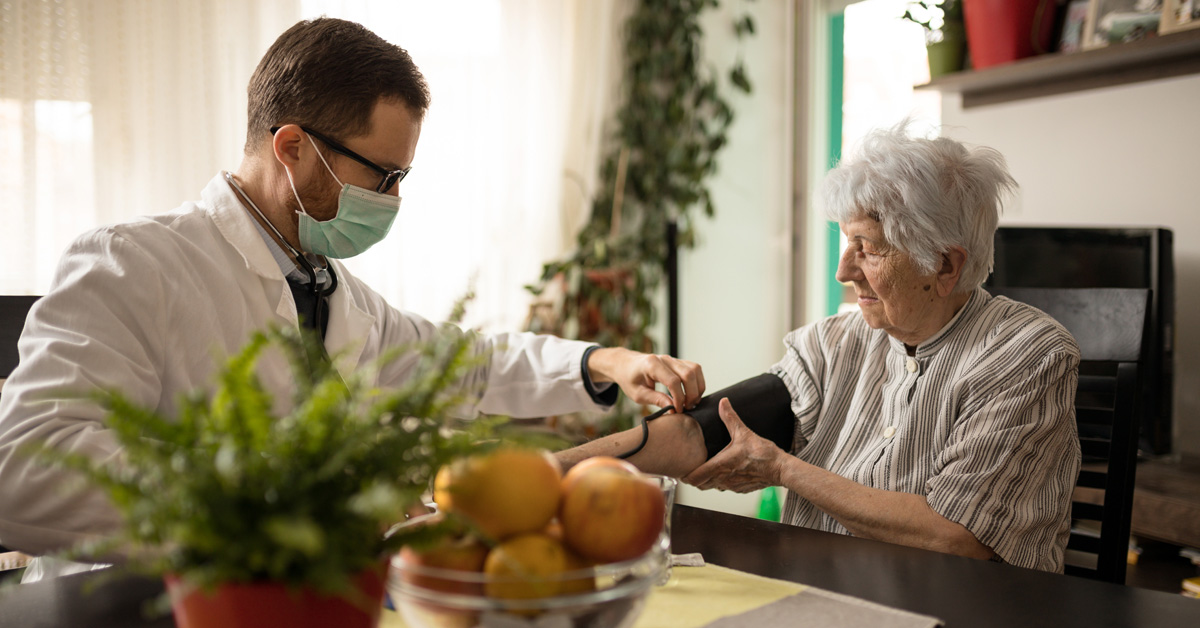
More Hospice Means Less Depression
When people take care of a dying family member, it can be a rewarding but emotionally and physically draining experience. After advanced disease affects a family, the family caregivers incur a higher risk for psychosocial distress, anxiety, and depression.1 This situation may even contribute to the widowhood effect, a phenomenon where mortality risk increases after the death of a spouse.2 Fortunately, Medicare pays 100% for hospice services, which are shown to provide major relief both to patients and their families. The key is that hospice services must be ordered at the right time. Research shows that family caregivers who receive hospice too late prove 700% more likely to experience major depressive disorder.3
What is Major Depressive Disorder?
Major depressive disorder (also called clinical depression) is a disabling mental health condition. It is characterized by prolonged, persistent feelings of sadness and loss of interest that a person just can’t snap out of. However, for many people, it can pass with time. Many more people feel better after medication and/or therapy. It affects how people think and behave and can interfere with daily activities. Seven percent of Americans experience major depressive disorder at some point in their lives. For family caregivers, it’s much more prevalent. When a family member has an advanced disease such as terminal cancer, a quarter to a third of family caregivers experience clinical depression.3
Hospice Reduces Depression
Dr. Elizabeth Bradley and colleagues studied the effect of hospice on clinical depression. Their results were published in The American Journal of Psychiatry.3 Bradley et al. found that more hospice correlates with less depression. The following list shows the percentage of family caregivers who experienced clinical depression after a losing a loved one, broken down by how much time they had in hospice.
- 1 to 3 days in hospice = 24.1%
- 4 to 7 days in hospice = 10%
- 8 to 14 days in hospice = 3%
On average, caregivers receiving more than three days experienced clinical depression 9% of the time.
How Much Time do People Receive in Hospice?
In Dr. Bradley’s study, nearly one in five families families received hospice for only one to three days. Many more did not receive hospice at all. The bad news is that this is better than normal. They studied families dealing with predictable forms of cancer. Other diseases follow less predictable paths, making it harder to decide the right time for hospice.
The latest information from the National Hospice and Palliative Care Organization (NHPCO) shows that hospice utilization and average length of stay (LOS) are on the rise – but still short for the majority of patients. The minimum recommended time in hospice is three months. Across all diagnoses, the average LOS is 24 days. Twenty-six percent receive the recommended LOS. Twenty-eight percent receive hospice for less than a week.
How to Time Hospice Correctly
Ultimately, the decision to begin hospice care is a personal one. When worthwhile curative options have been exhausted, and a patient’s goals shift toward comfort and quality time, it’s time to consider hospice. Doctors can encourage more timely use of hospice by having end-of-life conversations earlier in the course of each person’s disease. Dr. Bradley et al found that people who had 1-3 days in hospice were only told about their prognosis eight weeks prior on average. Families with longer enrollments were told about their prognosis with 26 weeks of life left. This adds to the evidence of a more recent study showing that earlier hospice conversations increase quality of life, lengthen survival, lower costs, and improve satisfaction with overall healthcare.4
Patients can influence this by telling doctors when they want to know their life expectancy and when they want to start learning about palliative care options. Asking for this when the life expectancy is one year can be a good strategy. This is long before hospice would usually begin, but not too early for other palliative care. More importantly, it’s a reasonable timeframe to begin research and family discussions on the subject.
References:
- Ferrell B, Mazanec P. Family Caregivers. In: Huria A, Balducci L, editors: Geriatric Oncology: Treatment, Assessment, and Management. New York: Springer 2009: 135-155.
- Elwert F, Christakis NA. The effect of widowhood on mortality by the causes of death of both spouses. American Journal of Public Health. 2008 Nov;98(11):2092-8.
- Bradley EH, Prigerson H, Carlson MD, Cherlin E, Johnson-Hurzeler R, Kasl SV. Depression among surviving caregivers: does length of hospice enrollment matter?. American Journal of Psychiatry. 2004 Dec 1;161(12):2257-62.
- Carpenter JG, McDarby M, Smith D, Johnson M, Thorpe J, Ersek M. Associations between timing of palliative care consults and family evaluation of care for veterans who die in a hospice/palliative care unit. Journal of Palliative Medicine. 2017 Jul 1; 20 (7): 745-51.





